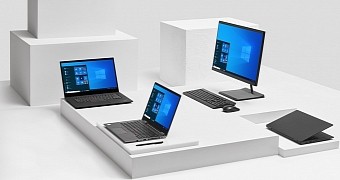While Microsoft is all about Windows 11 devices these days, the company continues to support Windows 10 as well, at least until October 2025 when the operating system officially reaches the end of support.
Until this happens, however, Microsoft sticks with the classic approach and gradually retires older versions of the operating system.
Next month, for instance, the software giant will officially kill off Windows 10 version 21H1, which means that this particular version would no longer receive any security updates.
Devices that are currently running version 21H1 should therefore be upgraded to a newer version of Windows 10 as soon as possible, though Microsoft also recommends switching to Windows 11 if the computer is eligible for the upgrade to the new OS.
The last pack of updates for Windows 10 version 21H1 will go live on December 13, the date when the Redmond-based software company releases next month’s Patch Tuesday fixes.
“On December 13, 2022, all editions of Windows 10, version 21H1 will reach end of servicing. The December 2022 security update, released on December 13, is the last update available for this version. After that date, devices running this version will no longer receive monthly security and quality updates containing protections from the latest security threats,” Microsoft explains.
So what’s going to happen after December 13?
The first thing you’ll probably notice is that your Windows 10 version 21H1 computer would no longer receive any updates. This means that any vulnerabilities that are discovered in the operating system would remain unfixed, and we all know how critical this is for your device and the data stored on it.
Then, if you somehow discovered a bug, not necessarily related to the security side of the OS, it will also stay there for as long as it gets, as the end of life essentially means that Microsoft would no longer fix anything in version 21H1.
While some users aren’t necessarily interested in updating to a newer version of Windows 10, not only that this is strongly recommended but Microsoft even plans to perform force upgrades as well. In other words, if you are running Windows 10 version 21H1 on your device, the company might end up installing a newer version of the operating system o the computer, just to make sure that your data is protected.
The whole thing will happen via Windows Update, as the new Windows 10 version would be downloaded and installed in the background. The process will obviously be completed when you reboot the device.
“To help keep devices protected and productive, Windows Update will automatically initiate a feature update for devices running Home and Pro (non-domain joined) editions of Windows 10, version 21H1 that are reaching end of servicing. This keeps devices supported and receiving monthly updates that are critical to security and ecosystem health. Remember that you and your users can choose a convenient time for devices to restart and complete the update while remaining productive,” Microsoft says.
While the installation of a new Windows 10 version will take place automatically, the switch to Windows 11 will be entirely optional. This means your device wouldn’t be upgraded to Windows 11 unless you specifically request it.
“Windows 11, version 22H2 – also known as the Windows 11 2022 Update – is available to you on eligible Windows devices. Just check for updates as explained on the Update Windows support page. Please note, if we detect that your devices might have an issue, such as an application incompatibility, we might put a safeguard hold in place and not offer the update until that issue is resolved,” Microsoft explains.
Needless to say, if you don’t want to wait for the Windows 10 version 21H1 EOL date to be reached, you can manually update to a newer version of Windows 10 or to Windows 11 today.

 14 DAY TRIAL //
14 DAY TRIAL //